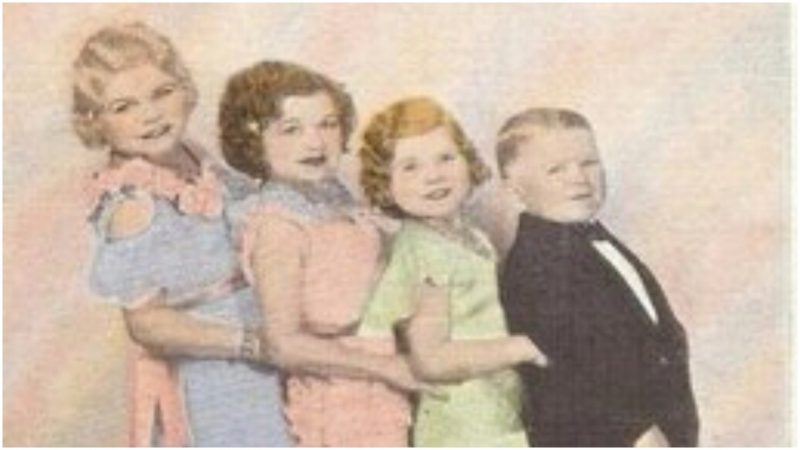“Hans. Yes, Frida. You have not been listening to me. Yes, I have Frida, I am. Then, what was I saying? You were saying, you were saying… what were you saying? I was saying, tonight you must not smoke such a big cigar! Your voice was very bad at tonight’s show. Please Frida, don’t tell me what I do! When I want a cigar, I smoke a cigar!”
This is how Hans, deeply immersed in his own thoughts, was “awakened” by his concerned lover and soon-to-be-wife Frida, midway through Tod Browning’s film Freaks, made in 1932. It was probably the second best scene in the whole movie, labeled by critics as “the most startling human story ever screened.” The first scene, of course, being the unforgettable “We accept her, we accept her. One of us, one of us. Gooble-gobble, gooble-gobble.”
For those who haven’t heard of this classic, Freaks is essentially a movie about a circus sideshow in which real-life people with disabilities and sideshow performers are cast alongside “normal” actors. The story is a disturbing yet powerful one about a man of short stature, around three feet tall, and how he came to be blindly seduced by a conniving and pretty-looking trapeze artist of typical size named Cleopatra after she learned of his inheritance. The creepy yet hilarious “Gooble-gobble” scene happens during their wedding reception, when the other “freaks” officially accept her in their group, right before she shows her true intentions.
The beguiled dwarf in this scenario is Hans, the cigar-smoking youth with trouble on his mind. And Frida, well, she was the dwarf woman Hans loved dearly and was supposed to marry until Cleopatra, “the most beautiful big person he’s ever seen,” came along and ruined everything for them. Hans and Frida are played by Harry Earles and Daisy Earles, and while they were passionate lovers in the movie, they were actually brother and sister in real life.
They were just two out of a group of four dwarf siblings who, in 1939, appeared as munchkins in Victor Fleming’s classic, The Wizard of Oz. Among the 124 munchkins hired for the purpose of the movie, Gracie, Harry, Daisy, and Tiny were already a famous quartet that toured the world as a group, performing in various sideshows and motion pictures for decades, and with time came to be known as the Doll Family, or as the Motion Picture Midgets in the movie industry.
Originally born as Kurt Scheider in Germany, Harry was undoubtedly the most famous of them all, maybe because of the serious manner in which he always presented himself. He was a performer who wanted to be an actor. After their manager, Bert W. Earles, proposed to take them across the Atlantic to live with him in California, in 1915 Harry moved to the U.S with his older sister, Frieda, in search of better prospects. There was already a job waiting for them and it was that of performing as Hansel and Gretel for the Buffalo Bill Touring Show.
Here they changed their names to Harry and Gracie and quickly came to be known as the cutest dancing couple in the United States. They adopted their manager’s last name to fit in better, and took advantage of their short stature and their baby faces as a way to capitalize on the burgeoning vaudeville and circus sideshows in the U.S. In the eyes of many, they were just kids with baby faces who acted as grownups, although they were fully grown human beings.
Sensing that a cute little family would be even more prosperous than a cute couple, Harry and Gracie arranged for their two younger sisters to come and live with them. First came Hilda in 1920, who instantly changed her name to Daisy, and then in 1926, their youngest sister Elly, who was referred to by her siblings as Tiny and that was the name she stuck with.
From then on, they were Harry Earles, Gracie Earles, Daisy Earles, and Tiny Earls, America’s sweethearts and the Dolls Family, which was actually their stage name for decades in Ringling Bros. and Barnum & Bailey Circus and their “Greatest Show on Earth.” In the meantime, for whatever reason and right out of nowhere, little people became the new hot thing in Hollywood. So, the ever debonair and always well dressed and well mannered Harry seized the opportunity and arranged a meeting with a director and pitched him an interesting idea about the life of the circus “freaks,” based on the short story “Spurs,” written by Tod Robbins.
The director’s name was Tod Browning, and this idea to make a movie out of a short story later grew to be Freaks, in which Harry would have the lead role and star along his little sister Daisy, known at the time as “Midget Mae West.” But first, in 1925, he starred in another Tod Browning silent movie, The Unholy Three, to great success. He portrayed a con artist named Tweedledee who robs people while posing as a baby and smokes big cigars when no one is around.
This brought his name genuine fame in Hollywood. After Harry’s debut, separately or together, the siblings appeared in countless other roles, including many Laurel and Hardy shorts, which led them to be known in these circles as the the Motion Picture Midgets.
Their final movie appearance was in 1939’s Wizard of Oz, when Victor Fleming hired them to be part of the munchkin crew and Harry himself as a Lollipop Guild Member. Like all the other munchkins, they were poorly paid and uncredited, so after the shooting was complete, they quit the movie business altogether and returned to stage life and the circus. The Dolls retired in 1958 and lived their remaining years as an inseparable family in Florida, in a state-of-the-art house especially designed to suit their size.
